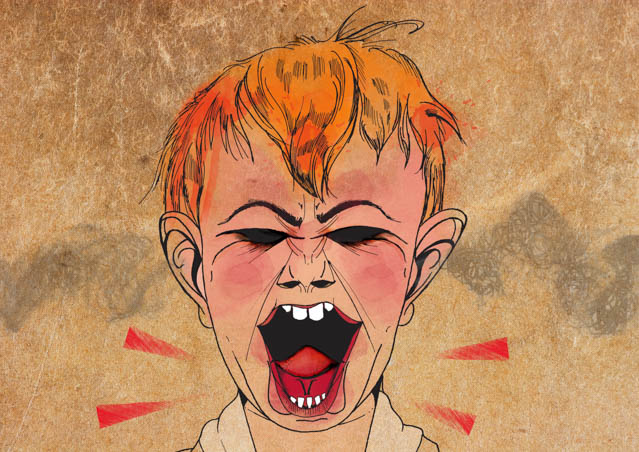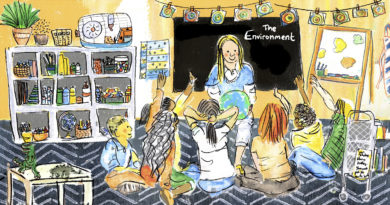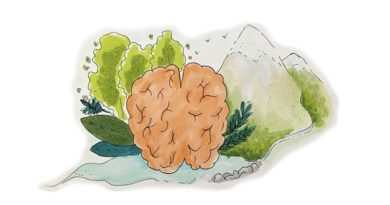The Truth About Anger
 Many of us grew up believing that anger was bad. But as anger researcher and writer Lesley Stephenson points out, anger is designed to protect us. Investigating our attitudes to this powerful emotion can resolve anger issues at home and provide better anger models for our children.
Many of us grew up believing that anger was bad. But as anger researcher and writer Lesley Stephenson points out, anger is designed to protect us. Investigating our attitudes to this powerful emotion can resolve anger issues at home and provide better anger models for our children.
What did you learn about anger when you were a child? Was anger accepted in your home and handled effectively? Or was it viewed as a “no-go” emotion to be swiftly squashed and perhaps even punished? Depending on your upbringing, your answers to these questions will vary. For instance, you may have grown up in a culture in which discussions were loud even if people weren’t angry, and where emotional explosions were a form of sport. If so, you will likely view anger with less fear and concern than those who experienced low tolerance for raised voices and emotional outbursts.
Checking your stance on anger is the first step towards understanding and managing anger, both your own and that of your children. How do you play out your anger? What behaviour do you typically display when you’re in a rage? Do you explode, withdraw, or plot covert revenge? You need to check, because if a child is displaying severe and uncontrolled anger, or has stuffed anger deep inside with disturbing side effects, it is likely that he or she has at least one parent or family role model displaying the same behaviour. No matter whether you’re a shouter or a suppressor, your way of displaying anger will be imitated in some form by your children.
Once we’ve identified our own anger habits, it’s time to find out what anger really is, and to dispel the myth claiming that anger is “evil.” It’s not, and never was. Anger is simply a powerful human emotion, designed to protect us! It emerges when we feel threatened, whether by circumstances, behaviours or events. Whatever the form of the threat, perceived or real, we react with fear and anger both. Take away anger, and all we have in the face of threat is paralysing fear. We actually need anger to survive. It only turns bad if we let it out at the wrong time, in the wrong place, in the wrong way, or not at all. Then, though, beware. Badly managed anger is just one little letter away from danger.
Over the past two decades, I’ve learned that anger can be channelled into peak performance in any area of activity. It is a huge source of energy, and that energy can be used constructively. Remember that time when your partner or child, boss or mother-in-law, said or did something which drove your anger buttons into red alert? Remember how you went into overdrive, your body pulsing with energy? Instead of slumping down in front of the television, you tidied out the garage, or vacuumed your apartment, or quickly did a job (which had been pending for months) while you were still seething with rage? What if you could take that energy and use it to fuel any constructive activity of your choice? Well, that is completely possible. And I can promise you this: once you learn to work constructively with your own anger, you will be able to help your children work effectively with their anger as well.
If you want to use your anger as a tool for accomplishment, the following model will help. This model looks at the way we respond to stimuli, and this is relevant because anger emerges in response to “threatening” stimuli. Let’s say that the stimulus for you is a trusted employee cheating your company; or your teenage daughter coming home hours past her curfew; or someone questioning your integrity, etc. The stimulus makes you angry, and you respond immediately with your usual anger response: yelling, sulking, physical violence, covert action, and so on. There’s a lot of energy in those reactions, but it bleeds into destructive behaviour against yourself and others.
Note the word immediately. Most of us respond immediately when we feel threatened, and when we do, we react with our usual anger behaviour. But instead of jumping into your usual angry reaction pattern (believe me, you have a choice), what if you wait a moment? If you do, you will access your choice to take action in any way you choose. Instead of blowing your top, you may choose to sit down and think before taking action. You may postpone action on the anger issue until you have calmed down, and use your anger energy for some other activity in the meantime. The point is: you have a choice. You get to choose how to respond to the “threat” you have experienced, and how to use the energy of your anger.
When you have learned to choose your response, you’ll be able to help your children with their own anger. Please, help them to understand that anger itself is not a bad thing (once they have reached the age of seven or eight, they are quite capable of getting this message). Let them know that it’s OK to say that they are angry and why, and that they have the power to choose how to behave when they are angry. If children grow up believing that anger is bad, they will feel guilty when they get angry, and that will make things worse.
Finally, if you need to defuse an angry debate with your children, I recommend the following strategy. Ask whoever is involved in the conflict to explain why they are angry. When they have finished speaking, wait for a full 15 seconds before responding. Most people find this difficult because in a heated argument we often don’t listen properly – our attention is on preparing our next response. Waiting helps us to really listen and think about what has been said before we respond. I have seen this technique defuse viciously angry arguments and create more understanding between warring factions than they had ever thought possible.
By Lesley Stephenson
© Copyright. Lesley Stephenson, 2014. All rights reserved.
Lesley is a corporate communications trainer and a recognized expert on stage-fright and anger management. She has worked as an English teacher in schools across four continents, and speaks to audiences worldwide on leadership and empowerment issues. She is the co-founder and vice president of the Swiss-based charity Ethiopian Enterprises.
Visit her website www.lesleystephenson.com to read more about working with anger, and her charity website www.ethiopianenterprises.org to learn more about her work in Ethiopia.
Illustration by Bvisual.
Beth (“BVisual”) graduated from university after studying visual communication, specialising in illustration. She’s has been working as a freelance creative and undertaken projects such as the V&A Illustration Awards in London. Currently living near Lausanne, Beth has projects involving portraits and editorial illustrations under her artist’s name BVisual. See http://www.bvisual.eu/.



